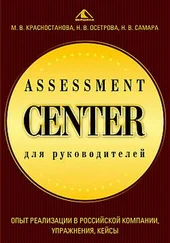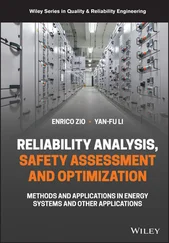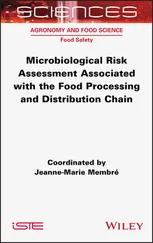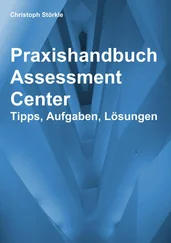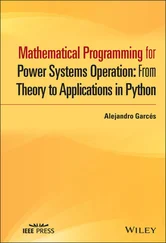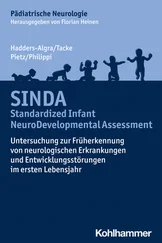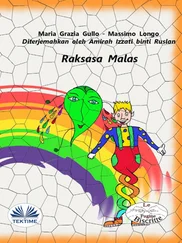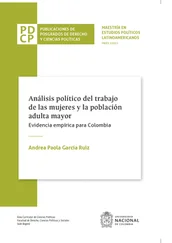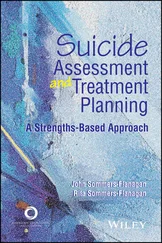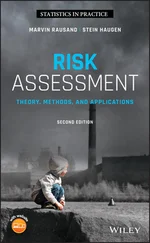Georgi Popov - Risk Assessment
Здесь есть возможность читать онлайн «Georgi Popov - Risk Assessment» — ознакомительный отрывок электронной книги совершенно бесплатно, а после прочтения отрывка купить полную версию. В некоторых случаях можно слушать аудио, скачать через торрент в формате fb2 и присутствует краткое содержание. Жанр: unrecognised, на английском языке. Описание произведения, (предисловие) а так же отзывы посетителей доступны на портале библиотеки ЛибКат.
- Название:Risk Assessment
- Автор:
- Жанр:
- Год:неизвестен
- ISBN:нет данных
- Рейтинг книги:4 / 5. Голосов: 1
-
Избранное:Добавить в избранное
- Отзывы:
-
Ваша оценка:
- 80
- 1
- 2
- 3
- 4
- 5
Risk Assessment: краткое содержание, описание и аннотация
Предлагаем к чтению аннотацию, описание, краткое содержание или предисловие (зависит от того, что написал сам автор книги «Risk Assessment»). Если вы не нашли необходимую информацию о книге — напишите в комментариях, мы постараемся отыскать её.
Explore the fundamentals of risk assessment with references to the latest standards, methodologies, and approaches Risk Assessment: A Practical Guide to Assessing Operational Risks
Risk Assessment: A Practical Guide to Assessing Operational Risks
Risk Assessment — читать онлайн ознакомительный отрывок
Ниже представлен текст книги, разбитый по страницам. Система сохранения места последней прочитанной страницы, позволяет с удобством читать онлайн бесплатно книгу «Risk Assessment», без необходимости каждый раз заново искать на чём Вы остановились. Поставьте закладку, и сможете в любой момент перейти на страницу, на которой закончили чтение.
Интервал:
Закладка:
23 19 Business Continuity Plan 19.1 Introduction 19.2 Business Continuity Management 19.3 Emergency Action Plans 19.4 Disaster Recovery Plans 19.5 Crisis Management Plans 19.6 Business Continuity Plans 19.7 Business Continuity Planning and Risk Assessment 19.8 Select BCP Team 19.9 Define Context, Purpose, Scope 19.10 Define Terminology 19.11 Critical Function Assessment 19.12 Threat Assessment 19.13 Business Impact Analysis (BIA) 19.14 Identify Hazards and Risk 19.15 Develop BCP References
24 20 Communicate Risk 20.1 Introduction 20.2 Communicating Risk 20.3 Key Practices 20.4 Risk‐Based Information and Decision‐making 20.5 Assessing and Communicating Risk 20.7 Conclusions References
25 Index
26 End User License Agreement
List of Tables
1 Chapter 3 Table 3.1 Example of a risk assessment matrix. Table 3.2 Example 5‐point risk assessment matrix. Table 3.3 Risk scoring levels and action required.
2 Chapter 4 Table 4.1 Variables in select risk scoring systems. Table 4.2 Qualitative risk assessment (5 × 4) matrix.Table 4.3 Semiquantitative risk assessment (5 × 4) matrix example.Table 4.4 Semiquantitative descriptions for likelihood of occurrence exampl...Table 4.5 Semiquantitative descriptions for severity of consequence example...Table 4.6 Risk scoring levels and action example.Table 4.7 Severity of consequence categories example.Table 4.8 Likelihood categories example.Table 4.9 Scoring table for occurrence ranking.Table 4.10 Risk formula with protection factor multipliers.Table 4.11 Example of a risk register.Table 4.12 Triggers for risk assessment.
3 Chapter 5Table 5.1 Types of fundamental methods.Table 5.2 Risk matrix example.Table 5.3 Risk priority levels example.
4 Chapter 7Table 7.1 Methods listed in OSHA 1910.119(e)(2).Table 7.2 Example of a qualitative/semiquantitative risk matrix (5 × 4) wit...
5 Chapter 8Table 8.1 Example 5–point risk assessment matrix.Table 8.2 Risk scoring tables for 5 × 5 matrix.Table 8.3 Risk scoring tables for 5 × 5 × 5 model.
6 Chapter 10Table 10.1 Prevention, protection, mitigation, and control definitions.Table 10.2 Interpretation of AIChE’s hierarchy.Table 10.3 Safety integrity levels taken from IEC 61508.Table 10.4 Example risk assessment matrix: numerical grading and scoring.Table 10.5 Example of frequency of consequences for MIC release calculation...
7 Chapter 11Table 11.1 Energy types and hazards.
8 Chapter 12Table 12.1 Health Effect Rating scheme: adapted and summarized AIHA health ...Table 12.2 Exposure rating categorization: based on an estimate of the arit...Table 12.3 Exposure rating categorization scheme.Table 12.4 Health effects ratings and occupational exposure bands.Table 12.5 EER categories.Table 12.6 Uncertainty ratings for a SEG.Table 12.7 Exposure assessment priority example.Table 12.8 BTEX exposure to the mixture example.Table 12.9 HRR example.Table 12.10 Frequency rating scale example.Table 12.11 Severity rating scale.Table 12.12 Severity ratings.Table 12.13 Probability or Frequency ratings.Table 12.14 Exposure Rating.Table 12.15 Modified FMEA and HRPN worksheet.Table 12.16 Comparison of EPA’s risk assessment process and IH principles.
9 Chapter 13Table 13.1 MIL‐STD‐882 Two‐Factor Risk Scoring System (4 × 5) example.Table 13.2 Qualitative 4 × 4 risk model.Table 13.3 Severity levels.Table 13.4 Exposure levels.Table 13.5 Protection factor level.Table 13.6 Risk priority number scale with action requirements.
10 Chapter 14Table 14.1 Examples of project‐oriented tasks.Table 14.2 HSE severity levels.Table 14.3 HSE likelihood levels.Table 14.4 HSE risk assessment matrix.Table 14.5 Severity categories from MIL‐STD‐882E.Table 14.6 Probability levels from MIL‐STD‐882E.Table 14.7 Risk assessment matrix from MIL‐STD‐882E .Table 14.8 Confined space hazards.Table 14.9 Severity categories from OPNAV Instruction 3500.39C.Table 14.10 Probability categories from OPNAV Instruction 3500.39C.
11 Chapter 15Table 15.1 Top five pathogens contributing to domestically acquired foodbor...Table 15.2 Top five pathogens contributing to domestically acquired foodbor...Table 15.3 Sample hazard analysis form.Table 15.4 Sample iFMEA form.
12 Chapter 16Table 16.1 Work‐related ergonomic risk factors.Table 16.2 Partial list of ergonomic risk assessment tools.
13 Chapter 17Table 17.1 Business assets and risks example.Table 17.2 Questions to be asked of management.Table 17.3 Consequence code table example.Table 17.4 Severity of consequence levels example.Table 17.5 Likelihood of occurrence levels example.
14 Chapter 18Table 18.1 Detailed PDCA cycle steps based on ISO 14001:2015 Standard.Table 18.2 Severity 1–5 scale descriptions example.Table 18.3 Impact probability example.Table 18.4 Frequency 1–3 rating example.Table 18.5 Frequency 1–5 rating example.Table 18.6 Legal risks 1–3 rating examples.Table 18.7 Legal risks 1–5 rating examples.Table 18.8 Current Controls 1–3 rating example.Table 18.9 Current Controls 1–5 rating example.Table 18.10 Personnel Risk 1–3 rating scale example.Table 18.11 Personnel Risk 1–5 rating scale example.Table 18.12 Example of activities, products, and services and their associa...Table 18.13 Significance scores.
List of Illustrations
1 Chapter 1 Figure 1.1 Elements of Exxon Mobil's OIMS. Figure 1.2 Prevention through Design. With permission. Hazards Limited. Figure 1.3 Risk matrix example.
2 Chapter 2 Figure 2.1 Risk Management Principles, Framework and Process. Figure 2.2 The Risk Management Process.
3 Chapter 3 Figure 3.1 The Risk Management Process. Figure 3.2 The OHSMS Plan‐Do‐Check Act process. Figure 3.3 Simplified steps of a risk assessment. Figure 3.4 The four quadrants of a Cartesian coordinate system. Figure 3.5 The ALARP model. Figure 3.6 Risk reduction hierarchy of controls.
4 Chapter 4Figure 4.1 Risk reduction hierarchy of controls.Figure 4.2 Risk reduction scale from ANSI B11.0‐2020 – safety of machinery....Figure 4.3 Two‐stage iterative approach to the hierarchy of controls and ris...Figure 4.4 Risk levels and their required actions.
5 Chapter 5Figure 5.1 Risk management process.Figure 5.2 Comparisons of hazard analysis, risk analysis, and risk assessmen...Figure 5.3 Hazard analysis and risk assessment process.Figure 5.4 Pre‐task hazard analysis card – front side.Figure 5.5 Pre‐task hazard analysis card – back side.Figure 5.6 Job risk assessment example.
6 Chapter 6Figure 6.1 System safety process sequence.Figure 6.2 Preliminary Hazard and Risk Analysis Process.Figure 6.3 Risk assessment matrix.Figure 6.4 Example Risk Assessment Matrix: Numerical Grading and Scoring.Figure 6.5 Preliminary risk analysis – current state and future state.Figure 6.6 Sequence of the process.Figure 6.7 Example of a completed PHA.
7 Chapter 7Figure 7.1 What‐if analysis process.Figure 7.2 Traditional What‐If Hazard Analysis example.Figure 7.3 SWIFRA worksheet.Figure 7.4 Risk pathway of event.Figure 7.5 Extensive treater damage.Figure 7.6 MIC day tank shield blanket structure.Figure 7.7 Qualitative SWIFRA example.Figure 7.8 Semiquantitative SWIFRA example.Figure 7.9 MIC tank blast shield post‐incident.
8 Chapter 8Figure 8.1 Potential Failure Mode and Effects Analysis sequence (informative...Figure 8.2 Modified CCP decision‐making model.Figure 8.3 CCP decision tree flowchart.Figure 8.4 Example of severity, probability, and prevention effectiveness ra...Figure 8.5 FMEA process.Figure 8.6 Failure Mode and Effects Analysis example.Figure 8.7 FMEA hazard analysis example.Figure 8.8 FMEA current state risk example.Figure 8.9 FMEA future‐state risk example.
9 Chapter 9Figure 9.1 Bow‐Tie diagram model.Figure 9.2 Simple FTA diagram.Figure 9.3 Photograph of immiscible oil layer on top of water.Figure 9.4 Fire triangle: Fuel, Oxygen and Ignition source.Figure 9.5 Foul condensate tank’s turpentine skimming system.Figure 9.6 Pressure vacuum breaker.Figure 9.7 Example of hot work permit.Figure 9.8 FTA “And gate” for fire hazard example.Figure 9.9 Simple ETA diagram.Figure 9.10 Example of ETA.Figure 9.11 Bow‐Tie Analysis example.Figure 9.12 Example of risk assessment sequence.Figure 9.13 Preliminary hazard analysis for paint booth example.Figure 9.14 Risk assessment matrix example.Figure 9.15 Preliminary hazard analysis with RL column.Figure 9.16 Business risk assessment matrix.Figure 9.17 Modified Bow‐Tie diagram.Figure 9.18 Hierarchy of controls.Figure 9.19 Risk assessment matrix with proposed interventions.Figure 9.20 Preliminary hazard analysis with updated RL scores.Figure 9.21 Business risk assessment matrix after the OSH interventions.Figure 9.22 Modified Bow‐Tie diagram with proposed OSH interventions.Figure 9.23 Risk factor rating scales example.Figure 9.24 Risk factor descriptions example.Figure 9.25 Bhopal disaster FMEA and RPN example.Figure 9.26 Modified Bow‐Tie with RPN and LOPA example.
Читать дальшеИнтервал:
Закладка:
Похожие книги на «Risk Assessment»
Представляем Вашему вниманию похожие книги на «Risk Assessment» списком для выбора. Мы отобрали схожую по названию и смыслу литературу в надежде предоставить читателям больше вариантов отыскать новые, интересные, ещё непрочитанные произведения.
Обсуждение, отзывы о книге «Risk Assessment» и просто собственные мнения читателей. Оставьте ваши комментарии, напишите, что Вы думаете о произведении, его смысле или главных героях. Укажите что конкретно понравилось, а что нет, и почему Вы так считаете.

